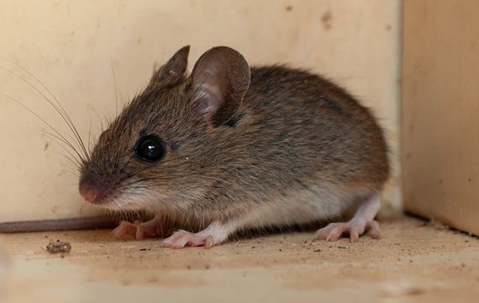Mouse Invasion 101: How To Safeguard Your Tampa Home
Deer mice and house mice and white-footed mice, oh my! There are all sorts of mouse species around our Tampa homes. It doesn’t take much for these pests to get inside, easily sneaking their way into our basements, kitchens, and attics.
If you’re looking for ways to safeguard your Tampa home, this article is perfect for you. Here, we’re discussing what you should know about protecting your home and family, including how to identify an infestation and what it costs to delay a professional treatment.
Looking for a professional mouse control service in Tampa? We dive into the specifics at the bottom of this guide. For now, let’s take a closer look at the basics of a mouse infestation, including how to identify one around your Tampa home.
Do I Have A Mouse Infestation?
Mouse infestations look a lot like rat infestations, especially to the untrained eye. How can you tell the difference between the two? And what are the signs of mice you need to know?
You can spot a mouse infestation in the house through the presence of:
- Mouse droppings: Unlike rats, mouse droppings measure roughly 1/8 to 1/4 of an inch long and have pointed tips (much like a grain of rice). They also tend to appear in large groups.
- Gnaw marks: Since mice teeth grow constantly throughout their lives, gnaw marks are an inevitable sign of their presence. Tiny tooth marks in plastic or paper containers may give you a clue to their whereabouts.
- Nesting behavior: Mice rip up paper, clothing, and insulation to build nests for their young. They may also gather lint or other soft materials to pad their homes.
- Live mice: Although most mouse species are active during the night, you may notice live mice scurrying around infested areas. Look out for rodents that are two to four inches long rodents with furry tails, large ears, white underbellies, and pointed noses.
If you spot any of these signs around your home, you need to contact a professional right away. Delaying treatment could lead to all sorts of problems, including the issues listed below.
The Cost Of Delayed Mouse Removal: Health Risks And Property Damage
Mice are far more dangerous than they initially appear. Despite their tiny sizes, they can wreak havoc on the homes they infest. Leaving them to their own devices could result in a myriad of problems, which only become worse if you delay your mouse removal services.
Chief among these is exposure to the diseases mice carry, including Leptospirosis, Lymphocytic Choriomeningitis, and Hantavirus Pulmonary Syndrome (HPS). You may also risk property damage to your walls, baseboards, and electrical wiring, which could potentially raise your risks for fires or other risks.
How Do I Prevent Mice Around My Property?
Ready to stop mice from getting into your home? You can use the following mouse prevention tips to protect your Tampa property:
- Seal cracks and gaps with expanding foam, caulking, or steel wool.
- Get rid of accessible food and water sources (like clogged drains and filled trash bags).
- Remove unnecessary clutter – like boxes and baskets – from around your attic or basement.
Note these are prevention tips only; they are not interchangeable with mouse removal or control. If you need to get rid of an infestation fast, you need to contact the team at Urbex for help.
The Importance Of Professional Mouse Control Services
Professional mouse control ensures the speedy removal of pests before infestations worsen or spread throughout your home. They also protect your loved ones from health risks and property damage, providing peace of mind and a strong sense of security.
Urbanex offers effective mouse removal for infestations, big or small. Whether you’re dealing with a few invaders or a larger infestation, you can trust our team to get the job done right.
Give us a call today to schedule an appointment for your property.
Request Your Free Inspection
Complete the form below to schedule your no obligation inspection.

